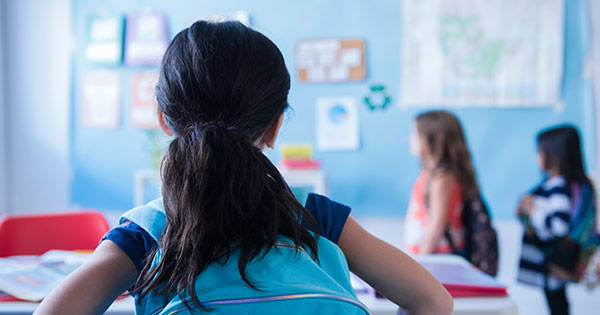
Between the last relaxing days of summer vacation and the frantic pace of the start of a new school year, it’s easy to get lost in the more concrete details of transitioning seasons. While ironing out lesson plans and getting to know a classroom full of new faces, it’s also your responsibility to foster a nurturing educational environment throughout the year.
The key to setting up your students for success? Tap into their right brain sensibilities by making sure the classroom is arranged to bolster their collective creativity. Some ideas below:
Set up a reflection space
Send students down the path of introspection. Always have a corkboard or other visual representation of recent lessons where students can contribute their thoughts on what they’ve just learned.
Create learning stations instead of working exclusively in rows
“Content can be delivered in a variety of sensory modalities,” says Rob Levit, frequent keynote speaker on creativity in the classroom and founder of Arts Integration and STEAM Professional Development. “One station can be a quick sketch, the next station can be a thinking routine, another can be a word find or a simple board game, and still another can be a tableau (a simple drama technique where students collaborate to create a freeze frame to demonstrate their understanding of an aspect of the content).”
Change the layout throughout the year
No need to keep the same structure every single day. When you’re working on real-world problems, for example, shake up the space with this tip from Patrick F. Bassett, President & Senior Consultant at Heads Up Educational Consulting. “Arrange desks and chairs in circles or hollow squares of 6-8 and give groups a real-world problem to solve, and ask them to appoint a group leader to keep the conversation going and a recorder-reporter to share solutions with the other groups.”
Don’t go overboard
Wish you had more to display, more to give? Sometimes, less is more, says Susan Riley, arts integration specialist and founder and president of EducationCloset. Try limiting the amount of materials you provide, background information you give, or even the visuals in your space, she suggests. “Often, creativity thrives best when it has room to grow.”
Incorporate purposeful color into your classroom
Think blues and greens. According to an experiment out of the University of British Columbia, the color blue enhances the performance on a creative task, and it promotes communication, trust, and efficiency. The color green, according to the study’s authors at the University of Munich in Germany, is great for innovation, as well as for promoting harmony and balance.
Pull names out of a hat
Traditional front to back row seating may reinforce old tropes of the “best and brightest” being at the head of the class. Instead of assigning seats, consider a different way of going about it: perhaps by simply pulling names out of a hat when all kids are present, letting each student know they’re a central and integral piece of a collaborative learning process.
Think of the classroom as a “living classroom”
Ask yourself, says Levit, what would make you excited to teach in your own room? “Colorful art, flexible seating arrangements, evolving (not static) wordwalls, a cool welcome ritual as students enter the room?” Chances are, he adds, if you are excited about your vibrant classroom, your students will be as well.
